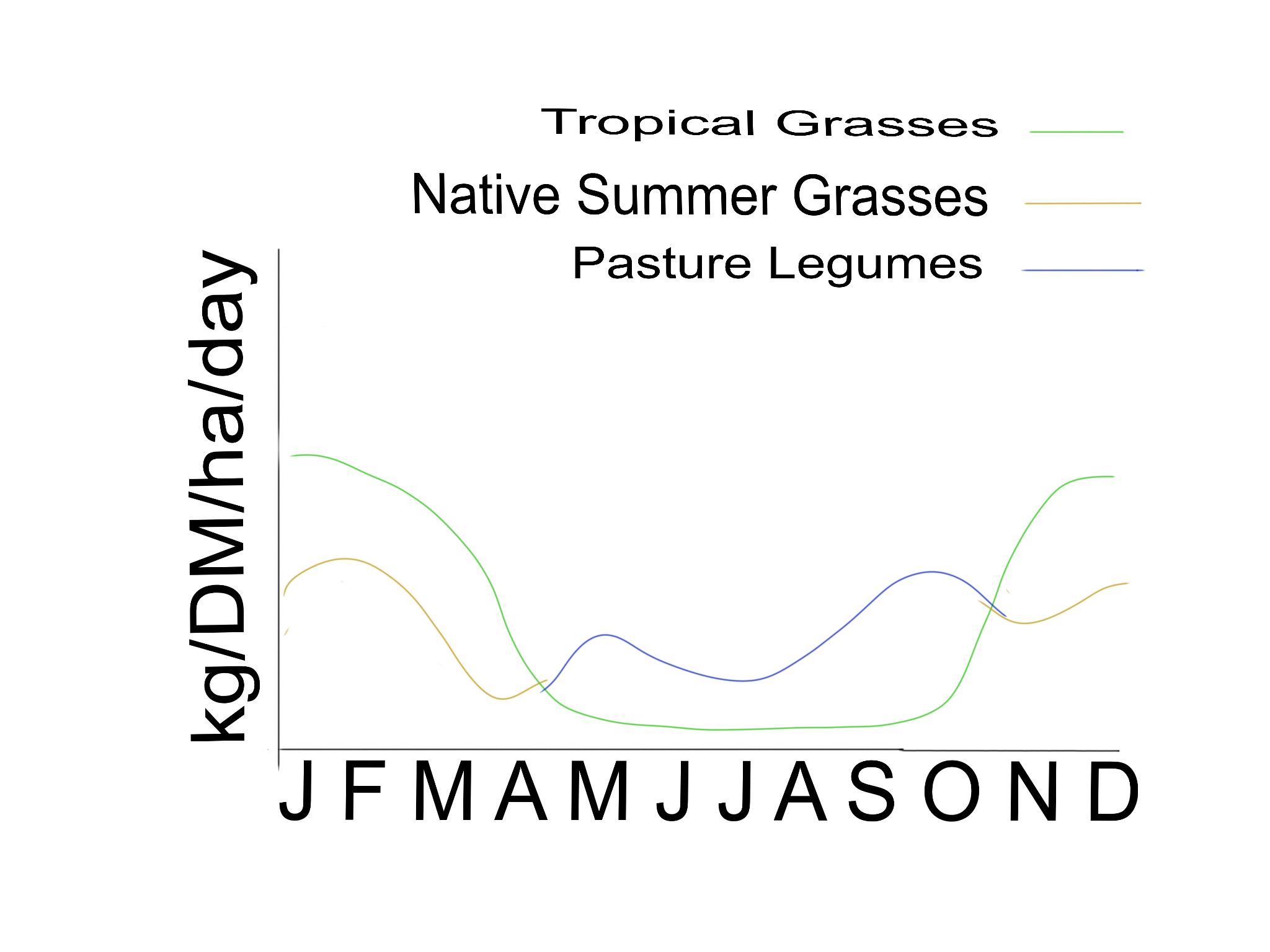Introduced tropicals v native grasses
23 Mar 2022
By Mixed Farming Adviser, Callen Thompson
I often get asked “What is better, native grasses or introduced tropical grasses?” But there is not a simple answer. You need to think about your farm system as a whole, what are the grazing, livestock, weed control and production outcomes you want and what type of pasture is going to give you those outcomes.
Can you sow tropicals?
Depending on the characteristics of your proposed area, the historical management of that area, or the type of pastures you intend to improve, you may be required to obtain authorisation prior to preparation and sowing of tropicals. Local Land Services can assist you with the required information before beginning your management plan. Contact Matt Lane on 0458 180 981 for further information regarding your situation and potential requirements.
When do you need more feed (and feed quality)?
Tropical grasses have a strong fit in many grazing businesses in the Central West, but you need to think about what you are trying to achieve before you decide to sow them. Tropicals like digit and Bambatsi Panic will produce a massive amount of reasonable quality feed in the summer months, much more than your natives will BUT, they are so good at turning moisture into grass and growing on the edges of the summer season that they reduce the amount of annual legume produced significantly (Figure 1) therefore decreasing winter growth.

Figure 1: Growth rates of pasture in the Central West, adapted from ProGraze.
You can manage them to improve winter growth, but you are relying on good Autumn rainfall for the legumes to get established before it gets too cold.
I think it is worth looking at the feed you need over the season, the amount of feed, the quality of feed and line that up with stock requirements for both feed quantity and feed quality. If you have gaps in the summer months or are happy to have standing low quality tropical grasses to carry dry stock over winter, tropicals may be a good option.
Dry stock equivalent (DSE) increase
Very rough figures with good average rainfall and good fertility, you may be able to lift stocking rate to seven DSE/ha/year in a paddock of tropicals, keeping in mind the seasonality of growth. In comparison, native pastures on the same soil type could be around four DSE/ha/year. DSE will vary significantly throughout our region.
Establishment is a process
It is not advisable to spray or plough out existing pastures and sow tropicals directly back in. One of the biggest reasons for failed establishment is summer growing annual grasses out competing the seedling tropical grasses. We generally recommend producers grow a winter crop for at least three years, making sure they have good weed control in summer (not letting summer grasses seed). You would need to include these costs (and potential profits from those crops) in any financial calculations you were doing.
Tropicals are hungry
Tropical grasses will persist with low fertility, but they will not reach their potential. Take soil tests and fix any deficiencies, particularly look at phosphorus and sulphur. Because nitrogen is limited due to a decrease in legume production, many producers are applying nitrogen to their tropicals to boost production. This can be a useful tool if you need to increase feed quality as well.
Can you boost the production of you natives with less $$$?
It may be more cost effective to boost the production of your native paddocks. Your grass production is driven by your legume production. You need your legumes to produce nitrogen. The more dry matter they produce the more nitrogen available for your grasses. If your legumes are not preforming, take a soil test. Sulphur and phosphorus are important for the legumes ability to fix nitrogen and both can be low in some of our local soils. Acidity may also be an issue if you have lighter soils. You can fix low fertility and improve soil pH as well as select and introduce legume species that are more suitable to low phosphorus and acidity.
Grazing management is going to be critical to improving your native pastures. You want to increase the more palatable and higher preforming species like red and blue grass and decrease the percentage of lower preforming grasses like windmill grass. High density/monocultures of windmill grass can be a sign of over grazing.
What paddocks should we sow tropicals into?
I think there is two key situations where Central West farmers should be using tropical grasses. Firstly, in existing cropping country that is not performing or if producers want to reduce cropping areas. Paddocks with low soil fertility, trafficability issue or low organic carbon are good examples of paddocks that could be sown down to pasture. Cropping paddocks are good candidates for tropical grasses as they have often had good control of summer grasses.
Secondly, pasture paddocks that have bad weed issues, particularly African lovegrass, spiney burr grass or blue heliotrope. Tropicals are very competitive and once establish, will reduce the ability for of weeds to germinate. In this situation, it is really important to clean up weeds with a crop phase.
If you would like further information, speak to your local LLS Ag team member phone 1300 795 299.